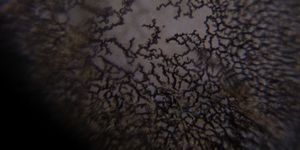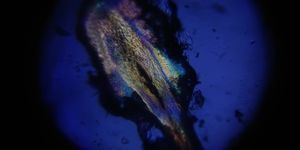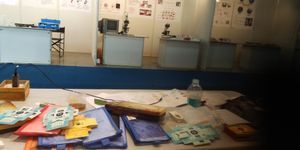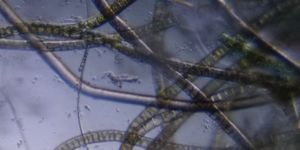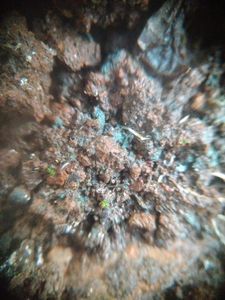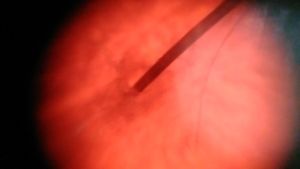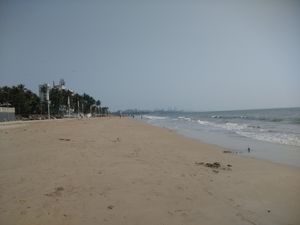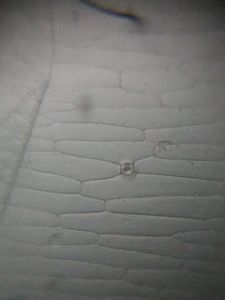YOU’VE GOT SNAIL!!
 Jun 09, 2020 • 1:13 PM UTC
Jun 09, 2020 • 1:13 PM UTC Unknown Location
Unknown Location 140x Magnification
140x Magnification Microorganisms
Microorganisms
Ronak Hati
Learn about the author...
31posts
53comments
2locations

About two years ago I came across these two posts on microcosmos :
https://microcosmos.foldscope.com/?p=81
https://microcosmos.foldscope.com/?p=32147
The observations in these posts made me want to image the snails at my home. I have tried imaging snails using many ways: cavity slides, plastic tapes – failing each time.
https://microcosmos.foldscope.com/?p=81
https://microcosmos.foldscope.com/?p=32147
The observations in these posts made me want to image the snails at my home. I have tried imaging snails using many ways: cavity slides, plastic tapes – failing each time.

The snail – genus Allopeas (most likely) – seen through the 10x magnifier.
The size of the shell is about 0.8m in length. Two things would always happen in my attempts. Either the shell would crack and kill the snail, or the snail would retract into its shell and seal the entrance with foam. I discussed why it foams in this post –
https://microcosmos.foldscope.com/?p=140103
This time, instead of observing a tiny, juvenile snail, I decided to look at an adult one (in its full glory). I wanted to observe the underside – how exactly does it move? As a child, I used to think that they have a large number of tiny feet, all covered in slime, all walking in a coordinated fashion.
I wish I were right, but they only have a single footpad, unless we come across mutant snails with two or more feet (like the bithorax phenotype of Drosophila ). Snails make up for one foot by having thousands of teeth.
I had to make room for the snail and also ensure it crawled in a way with its underside pointed towards the lens. So I took a glass slide, stuck two matchsticks on it, took my snail on a coverslip, and ultimately inverted the coverslip on the slide to create a small chamber. I taped the coverslip to the slide. Let’s give it a name – how about ‘allopie’?
The size of the shell is about 0.8m in length. Two things would always happen in my attempts. Either the shell would crack and kill the snail, or the snail would retract into its shell and seal the entrance with foam. I discussed why it foams in this post –
https://microcosmos.foldscope.com/?p=140103
This time, instead of observing a tiny, juvenile snail, I decided to look at an adult one (in its full glory). I wanted to observe the underside – how exactly does it move? As a child, I used to think that they have a large number of tiny feet, all covered in slime, all walking in a coordinated fashion.
I wish I were right, but they only have a single footpad, unless we come across mutant snails with two or more feet (like the bithorax phenotype of Drosophila ). Snails make up for one foot by having thousands of teeth.
I had to make room for the snail and also ensure it crawled in a way with its underside pointed towards the lens. So I took a glass slide, stuck two matchsticks on it, took my snail on a coverslip, and ultimately inverted the coverslip on the slide to create a small chamber. I taped the coverslip to the slide. Let’s give it a name – how about ‘allopie’?
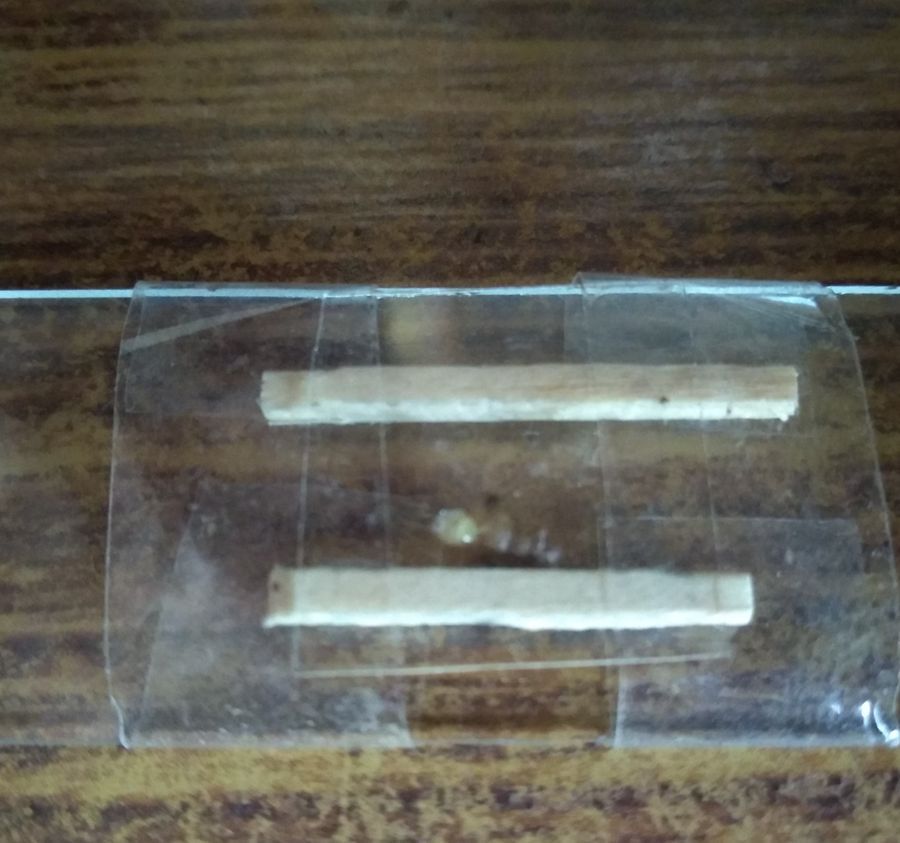
A snail sandwich – glass slide, matchsticks, our allopie, coverslip, and cello tape.
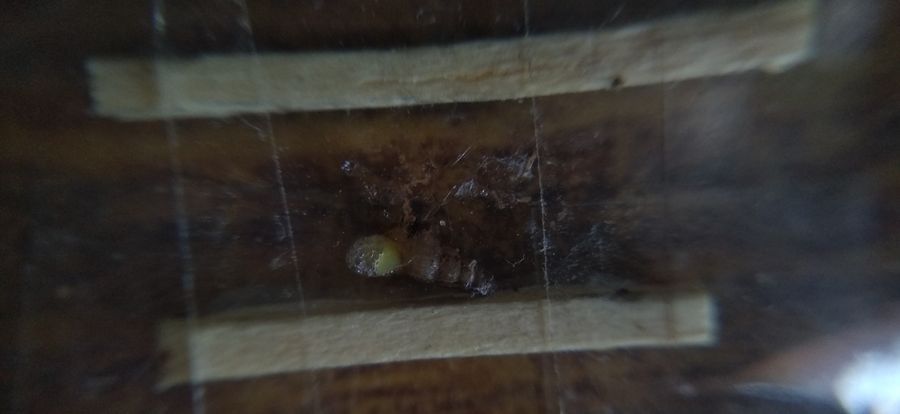
Before I could even image, it slid into its shell and foamed. I waited. After some waiting, it came out again.
And here I put the slide into my foldscope, and finally observed what I wanted to…
Just look at all the slime it produces!
Just look at all the slime it produces!
We can see a ‘wave’ that moves just like a ripple in the water! (watch the video at 0.25x speed)
It seems that one ripple immediately follows the other and originates at the posterior end (do they compulsorily originate from there only? can they originate from anywhere along the length of the footpad?). One thing is for sure, that it moves towards the anterior end.
How does this ripple help our allopie move forward? The posterior end of the footpad of allopie lifts up as the muscles in that region contract. Look at this small representation I created, where line AC represents the entire footpad. Because A moves from its previous position to a new position, the region of footpad between A and B lifts up and creates a small ‘pocket’. Now A remains in its new position as the muscles in the posterior regions relax and the anterior regions contract, thus setting forward the wave.
It seems that one ripple immediately follows the other and originates at the posterior end (do they compulsorily originate from there only? can they originate from anywhere along the length of the footpad?). One thing is for sure, that it moves towards the anterior end.
How does this ripple help our allopie move forward? The posterior end of the footpad of allopie lifts up as the muscles in that region contract. Look at this small representation I created, where line AC represents the entire footpad. Because A moves from its previous position to a new position, the region of footpad between A and B lifts up and creates a small ‘pocket’. Now A remains in its new position as the muscles in the posterior regions relax and the anterior regions contract, thus setting forward the wave.

This wave likely generates enough energy to propel our allopie (and all other snails) forward. And it is not just one wave at a time, but several waves that occur with intervals. These are the pedal waves. The regions between the pedal waves are interwaves. The picture below shows what I mean. Several pedal waves occurring simultaneously on the footpad helps it move continuously forward.
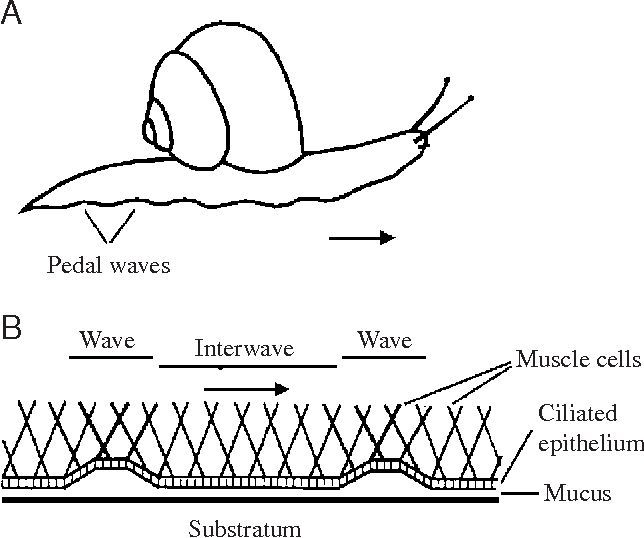
Adapted from Pavlova (2001), Journal of Experimental Biology As I ended up imaging the waves, our allopie must have flipped and started crawling on the glass slide instead of coverslip. I got to look at its shell, and next I was really amazed by what I saw!
I wish I could have a closer look at its eye… will do it the next time! Need some controlled way of looking, because it will tend to go out of focus a lot!
Could you suggest me a way of making the snail stay still, so I could look at all its parts?
EDIT: I realized that pedal waves propagate ahead through peeling motion, so physics pertaining to it can apply to the waves too.
Cheers,
Ronak.
Could you suggest me a way of making the snail stay still, so I could look at all its parts?
EDIT: I realized that pedal waves propagate ahead through peeling motion, so physics pertaining to it can apply to the waves too.
Cheers,
Ronak.
Sign in to commentNobody has commented yet... Share your thoughts with the author and start the discussion!
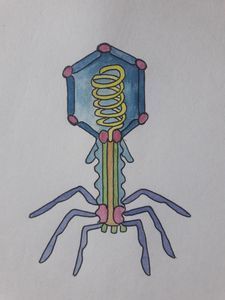
 0 Applause
0 Applause 0 Comments
0 Comments

